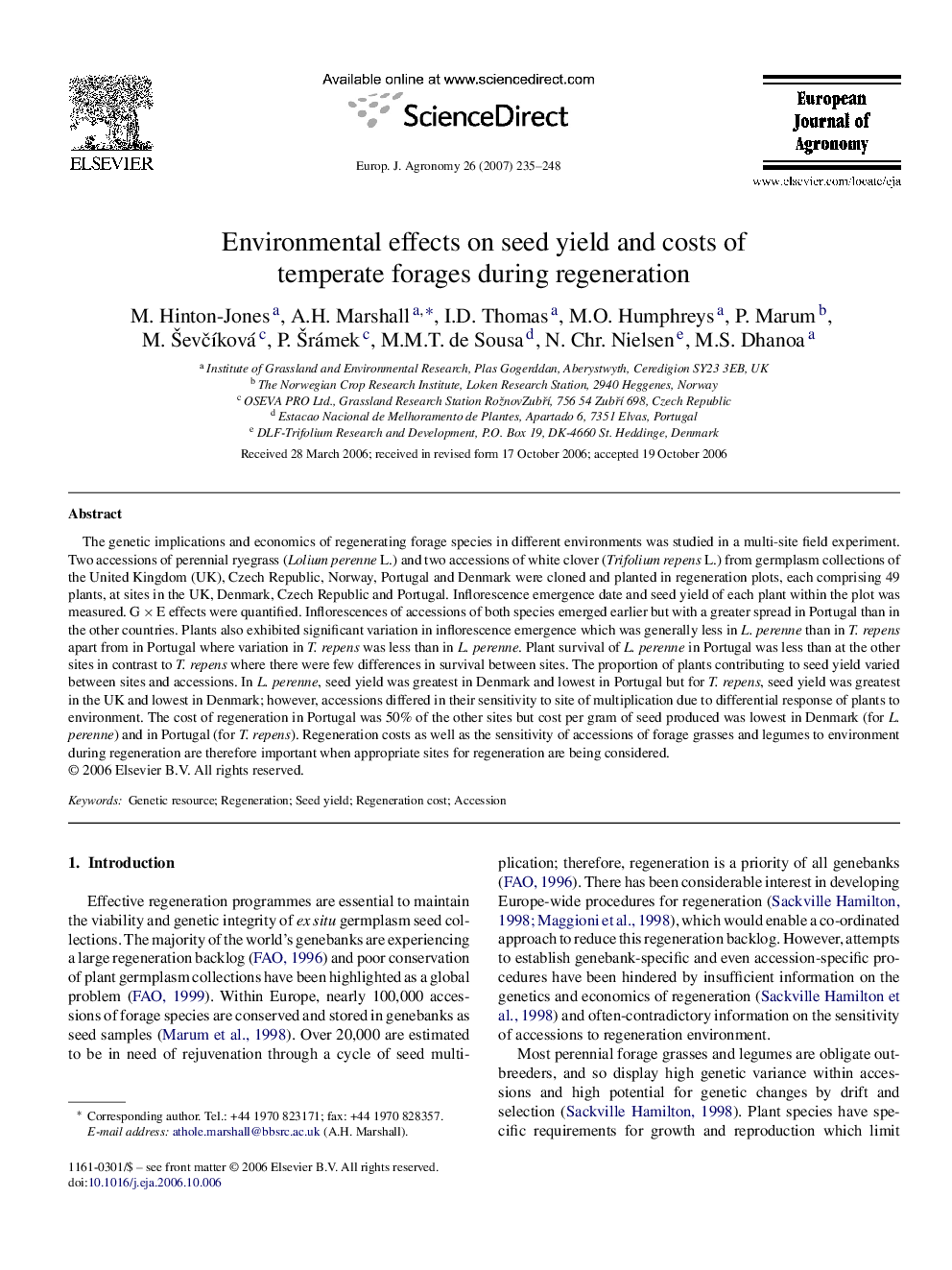| Article ID | Journal | Published Year | Pages | File Type |
|---|---|---|---|---|
| 4509639 | European Journal of Agronomy | 2007 | 14 Pages |
The genetic implications and economics of regenerating forage species in different environments was studied in a multi-site field experiment. Two accessions of perennial ryegrass (Lolium perenne L.) and two accessions of white clover (Trifolium repens L.) from germplasm collections of the United Kingdom (UK), Czech Republic, Norway, Portugal and Denmark were cloned and planted in regeneration plots, each comprising 49 plants, at sites in the UK, Denmark, Czech Republic and Portugal. Inflorescence emergence date and seed yield of each plant within the plot was measured. G × E effects were quantified. Inflorescences of accessions of both species emerged earlier but with a greater spread in Portugal than in the other countries. Plants also exhibited significant variation in inflorescence emergence which was generally less in L. perenne than in T. repens apart from in Portugal where variation in T. repens was less than in L. perenne. Plant survival of L. perenne in Portugal was less than at the other sites in contrast to T. repens where there were few differences in survival between sites. The proportion of plants contributing to seed yield varied between sites and accessions. In L. perenne, seed yield was greatest in Denmark and lowest in Portugal but for T. repens, seed yield was greatest in the UK and lowest in Denmark; however, accessions differed in their sensitivity to site of multiplication due to differential response of plants to environment. The cost of regeneration in Portugal was 50% of the other sites but cost per gram of seed produced was lowest in Denmark (for L. perenne) and in Portugal (for T. repens). Regeneration costs as well as the sensitivity of accessions of forage grasses and legumes to environment during regeneration are therefore important when appropriate sites for regeneration are being considered.
